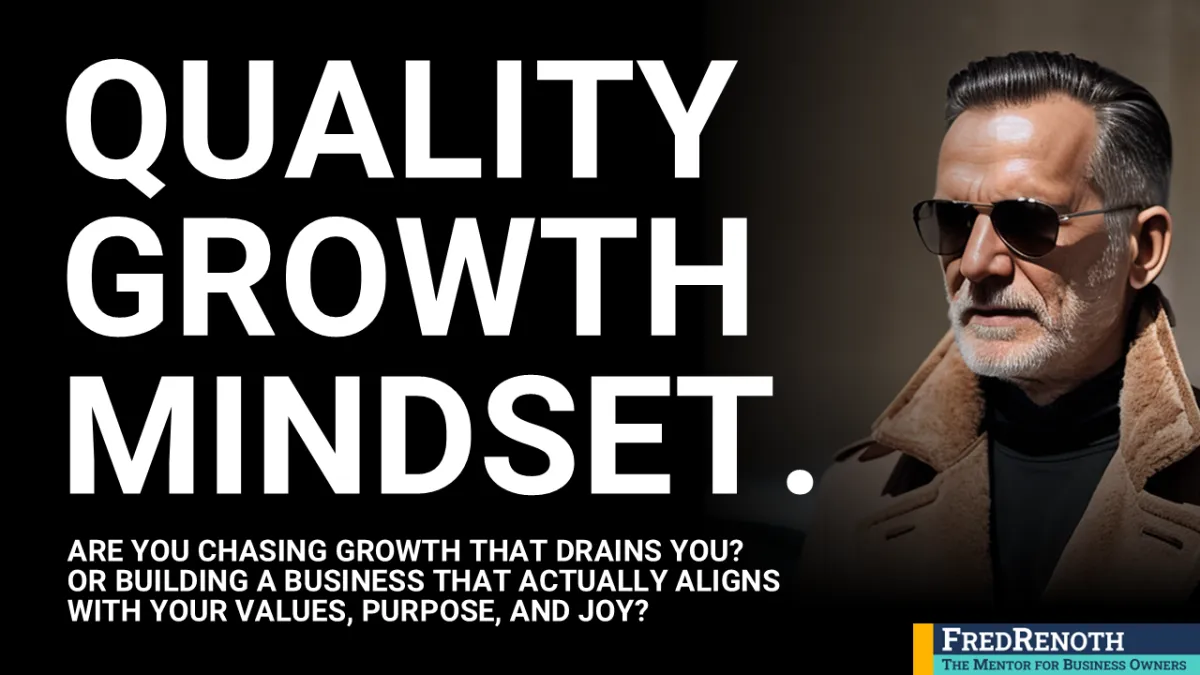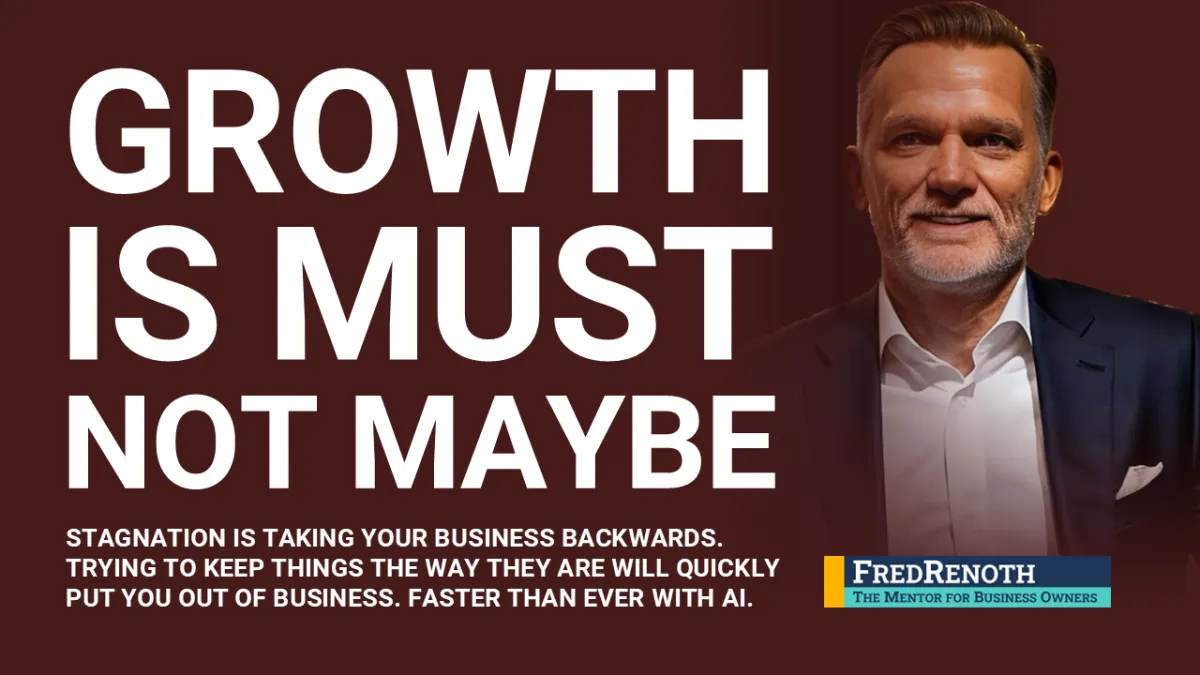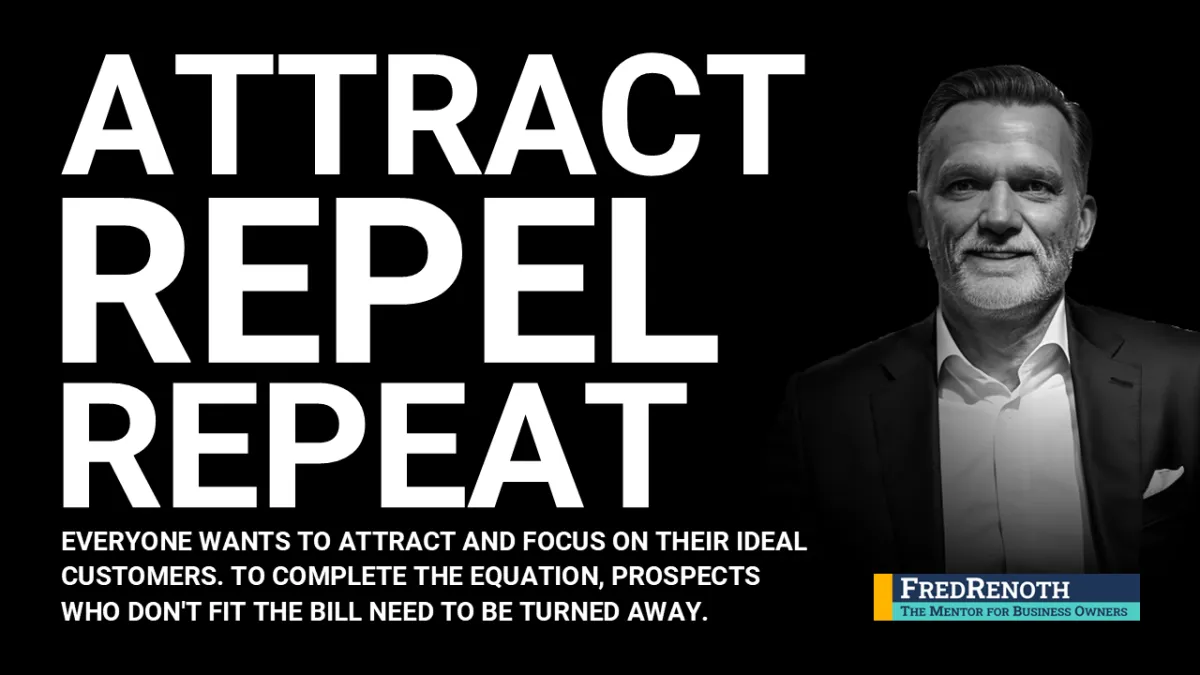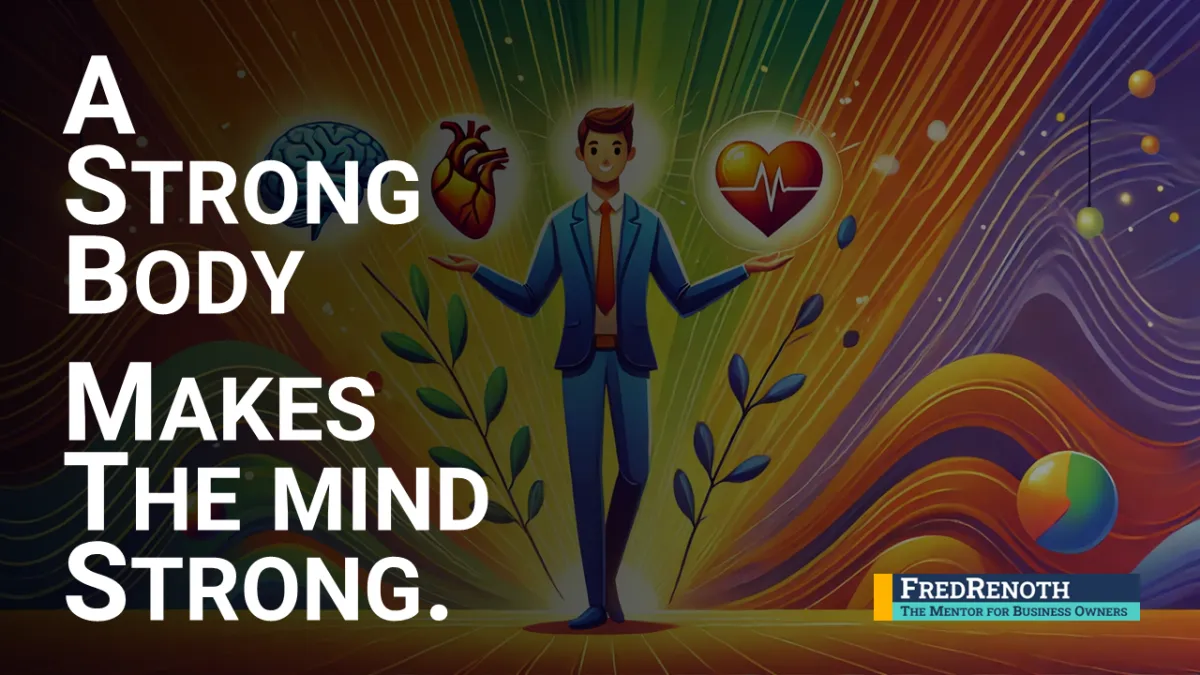


Welcome to Fred's
the Healthy Business BLOG
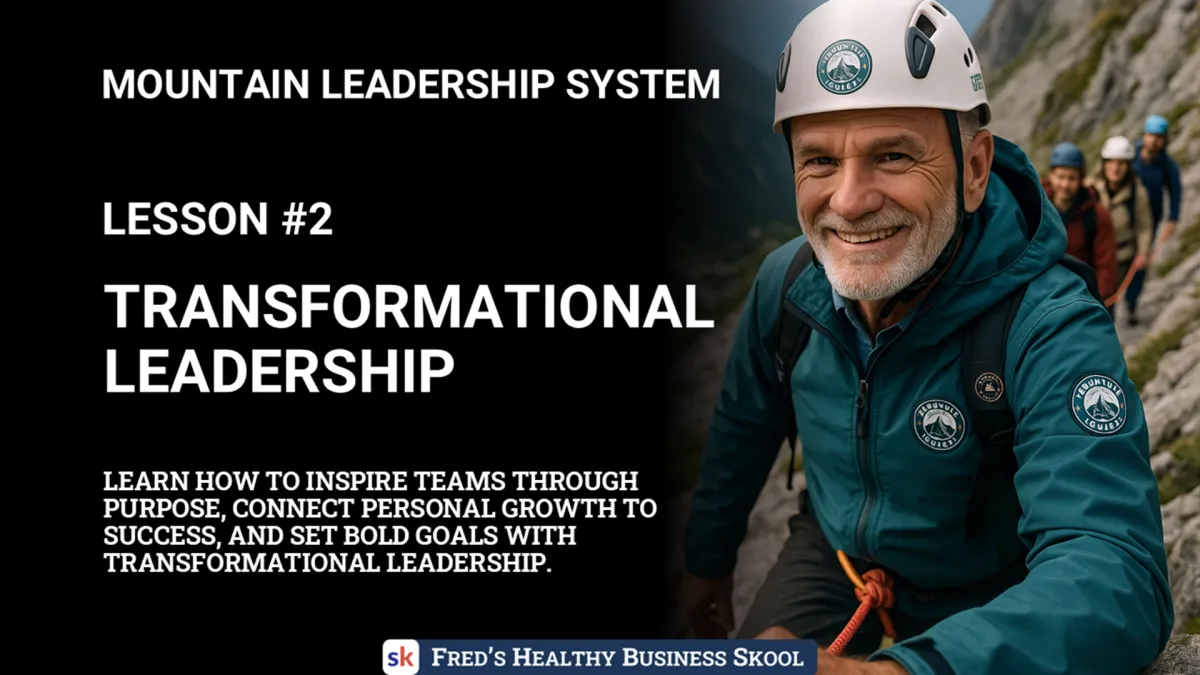
Lesson #2 - Transformational Leadership
You don’t follow someone because they have a title. You follow them because they have a vision. A clear, honest, and inspiring “why” that makes you believe in something bigger than yourself. That’s the power of transformational leadership - and that’s exactly what this module is all about.
Let’s begin with a story. In 1961, President John F. Kennedy stood before Congress and declared an audacious goal: to land a man on the moon before the decade was out. At that time, NASA had barely figured out how to get a satellite into orbit. The challenge was staggering. The budget uncertain. The science incomplete. But the vision? Crystal clear.
When Kennedy shared that goal, he didn’t start with the technical details. He didn’t explain the fuel requirements, the rocket math, or the engineering process. He started with purpose: “We choose to go to the moon … not because it is easy, but because it is hard.” That sentence changed everything.
It inspired a nation. It unified thousands of engineers, scientists, and contractors. And in less than ten years, Neil Armstrong set foot on the lunar surface. Not because the path was easy, but because the vision made the struggle worth it. That’s what Vision-Driven Inspiration does.
Welcome to Module #2: Vision-Driven Inspiration.
In this lesson, you’ll learn how to harness the same transformational leadership strategy. One that moves your team from surviving to striving. From completing tasks to chasing missions. From burnout to buy-in. Whether you’re running a startup, leading a team, or just beginning to define your leadership style, this training will help you spark the kind of motivation that doesn’t burn out - because it comes from within.
Week 1 – Define Your “Why”: The Heartbeat of Leadership
Let’s be honest. Most mission statements sound like they were written by a committee with no soul. Generic. Polished. Forgettable. That’s because they usually start with “how” instead of “why.”
Transformational leaders reverse that order. They begin with purpose. That magnetic pull that gives people a reason to care. Simon Sinek’s famous TED Talk, “Start With Why,” has over 60 million views for a reason - people are desperate for purpose. They want to matter.
Your job is to define that purpose so clearly that others can feel it. Not just understand it - feel it.
What change do you want to create?
What does success mean beyond the numbers?
Why does this work exist in the first place?
When your team sees that their work is part of something bigger, something meaningful, they show up with more heart. More focus. More pride.
This week, you’ll craft your leadership vision. One bold, honest sentence that sums up the future you’re building — and why it matters. This is your North Star. Every decision, every conversation, every challenge you face will be guided by it.
Let’s look at a real-life example.
In 2012, Starbucks CEO Howard Schultz returned to the company after a rocky financial period. Most leaders would focus on profits. Schultz focused on purpose. He reminded the team that Starbucks wasn't just in the coffee business — they were in the “people business serving coffee.”
That vision shifted the culture. Suddenly, it wasn’t just about drinks; it was about connection. Baristas weren’t workers. They were ambassadors of warmth. Sales rebounded. So did morale.
Your Exercise This Week
Block 90 minutes. No laptop. Just pen and paper.
Write a letter to your team explaining why your organization exists - without using the words “profit,” “efficiency,” or “market share.”
Read it aloud. Notice where you feel excited or disconnected. Those emotions are data.
Refine the letter into one bold sentence. That’s your leadership vision. Your job is not to impress. It’s to express. If it feels risky to share — good. That’s how you know it’s real.
Week 2 – Communicate Like a Missionary, Not a Manager
Here’s a hard truth: your team doesn’t read your memos. They skim your emails. They nod in meetings and forget everything five minutes later. Why? Because most leaders talk like machines — not messengers.
To inspire, you need to speak like a human being. And you need to say things that move people.
Great leaders are great communicators because they don’t just inform - they ignite. They use stories. Emotions. Imagery. They repeat the message so often and so clearly that it becomes part of the team’s identity.
When Elon Musk talks about colonizing Mars, people don’t remember the launch specs. They remember his vision: making life multiplanetary. When Patagonia speaks about saving the planet, they don’t mention logistics - they tell stories about rivers, glaciers, and indigenous communities.
This week, you’ll practice delivering your mission with emotion and authenticity. You’ll learn how to translate your bold vision into language that gets remembered, repeated, and acted on. Because a vision no one hears is just a dream. A vision people repeat? That’s a movement.
Great communication doesn’t happen by accident. It happens by design. Here’s what to master:
Clarity: Say one thing well. Not three things vaguely.
Emotion: People forget logic. They remember feeling.
Repetition: A great message becomes a mantra.
Think of Martin Luther King Jr.’s “I Have a Dream” speech. The phrase is repeated over and over — not because people didn’t understand it, but because it needed to become part of their identity. The same is true for your vision.
Case Study
Salesforce CEO Marc Benioff often tells the story of building a “1-1-1” philanthropic model — giving 1% of revenue, equity, and employee time to nonprofit causes. That story has been told hundreds of times. Why? Because it’s part of Salesforce’s DNA. Employees repeat it. Customers expect it. It inspires loyalty.
Your Exercise This Week
Write your vision in three formats:
A one-sentence mantra you can say in meetings.
A short story that illustrates the vision in action.
A three-minute talk that could be shared at your next team gathering.
Practice delivering it with energy. Film yourself. Watch your tone, expression, and clarity. You’re not just sharing information - you’re enrolling believers.
Week 3 – Personal Growth is the Ultimate Team Strategy
You’ve probably heard the saying, “People don’t quit jobs - they quit managers.” True. But it’s also true that people stay when they grow.
A bold vision must be more than aspirational. It must be developmental. If your team doesn’t see how their personal goals align with your organizational mission, they’ll never fully commit.
Transformational leaders make that connection explicit. They ask: what do you want to become - and how can we help you get there while serving this mission?
They link personal dreams to team outcomes. And when that alignment happens, something magical unfolds. People stop asking, “What’s in it for me?” and start saying, “Look what we’re building together.”
This week, you’ll identify growth goals for your team members and connect them to your mission. You’ll learn how to design conversations and systems that support both the business and the individual. Because when your team grows, your results follow.
Case Study: Satya Nadella, Microsoft CEO
When Nadella took over in 2014, Microsoft was known for its hard-charging, competitive internal culture. He changed the tone. His leadership focused on empathy, learning, and growth. Employees were encouraged to shift from a “know-it-all” to a “learn-it-all” mindset.
He asked managers to deeply understand their team’s personal and career goals. Learning became the engine of innovation. Today, Microsoft is among the most admired companies in the world — with employee satisfaction soaring.
Your Role: You’re not just leading a business. You’re leading careers. Dreams. Human potential.
Your Exercise This Week:
Set 1:1 meetings with every direct report. Ask them:
What are you learning right now?
What would you like to be known for one year from now?
What frustrates or excites you about your current role?
If you had 20% of your time to focus on your dream work, what would you do?
Take notes. Find common threads. Then connect those goals to your team’s mission. Example: If your vision is “to simplify the way busy families eat healthy meals,” and your team member dreams of becoming a creative director - assign them to lead the next campaign. Development becomes contribution.
Week 4 - Stretch the Vision: Bold Goals and Big Thinking
Inspiration is not always about comfort. Sometimes, it’s about challenge.
We are hardwired to resist change. The brain wants safety, predictability, ease. But the soul? It craves challenge. Meaning. Growth.
Transformational leaders understand that tension. They set bold, stretch goals — not to break people, but to awaken them.
NASA’s moonshot wasn’t just inspiring. It was terrifying. But it pushed everyone to levels of innovation no one thought possible.
Google’s OKRs (Objectives and Key Results) encourage teams to set goals with a 60-70% success rate. Why? Because failing at an ambitious goal still produces more than hitting an easy one.
This week, you’ll create your own moonshot. A goal so bold it makes your team sit up straighter. A goal that demands innovation. One that transforms your team’s thinking — and, if done right, transforms their belief in what’s possible.
Let’s reframe how we view goals. Safe goals protect your ego. Stretch goals expand your identity.
Example: Google’s OKRs
In Google’s system, ambitious goals are encouraged - but hitting 100% is not expected. Why? Because aiming for 70% completion on a 10x goal produces more than a 100% completion on a 2x goal.
Story: In 1943, Abraham Maslow published his theory of the hierarchy of needs. At the top? Self-actualization - the drive to fulfill one’s potential. Bold goals activate that. They ask people to become more. To try. To struggle. To become.
Exercise This Week:
Write one Moonshot Goal. Ask:
What’s a result that would radically accelerate our mission?
What if we were 10 times bolder?
What belief would we have to let go of to make this real?
Then reverse-engineer the first three steps. Make the goal real, not abstract. Share it with your team. Expect resistance. That’s the sign you’re on the right track. Track weekly progress in a public way. Celebrate the effort, not just the win. That’s how you build momentum.
Conclusion – From Role to Mission
Most people are hired to fill a role. But they stay because they’re inspired by a mission.
Your job as a leader is not to hand out tasks. It’s to hand out meaning. Vision-Driven Inspiration is how you do that - by starting with “why,” speaking from the heart, linking growth to purpose, and challenging your team to rise.
This isn’t fluff. It’s leadership at its highest level. Because in the end, people don’t follow you for what you do. They follow you for where you’re going - and who you help them become along the way.
5-Point Action Plan
Define your leadership vision in one clear sentence that explains why your work matters.
Practice delivering your vision with emotional clarity — through story, not just instruction.
Meet with each team member to understand their personal goals and link them to team outcomes.
Design a system to recognize progress toward both personal and collective goals.
Set one bold, stretch goal that reflects your vision — and inspires innovation.
Wrap-Up: From Compliance to Commitment
Most organizations are fueled by compliance. “Do what you’re told.” “Hit the target.” “Follow the rules.”
But the best organizations? They run on commitment. On passion. On ownership. And commitment is always born from clarity.
This training doesn’t end with this week. Your leadership won’t transform because you completed a worksheet. It will transform because you keep showing up with vision. With vulnerability. With belief.
Every time you share your mission, someone leans in.
Every time you connect work to purpose, someone feels seen.
Every time you stretch a goal, someone grows.
This is Vision-Driven Inspiration. This is transformational leadership. And this is where you stop managing - and start moving people.
Because people don’t want to be managed. They want to be moved.
Want to Take it a Step Further?
Enjoyed this article?
It may give you a taste of what we talk about with our clients in the FredRenoth Mentoring Program.
Check out our website (CLICK HERE FOR WEBSITE).
And, of course, I'm ready to answer all your questions in a VALUE CALL. Just click the link.
Copyright 2025 Sysbizz LLC - All Rights Reserved



